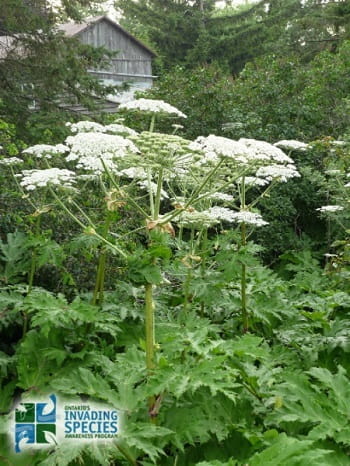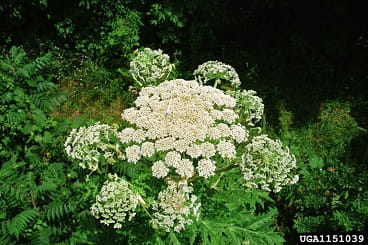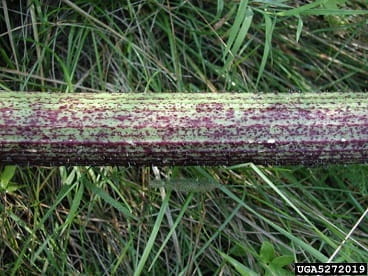The web Browser you are currently using is unsupported, and some features of this site may not work as intended. Please update to a modern browser such as Chrome, Firefox or Edge to experience all features Michigan.gov has to offer.
Invasive Species: Giant Hogweed
Giant Hogweed
(Heracleum mantegazzianum)
*Established in Michigan*
PROHIBITED IN MICHIGAN
IDENTIFICATION
- White flowers in an umbrella-shaped cluster up to 2.5 feet across.
- Plant is 7 to 14 feet tall.
- Stems are green with purple splotches and visible, coarse, white hairs.
- Leaves are up to 5 feet wide, lobed and deeply incised.
REPORT THIS SPECIES
Use the Midwest Invasive Species Information Network (MISIN) online reporting tool.
- Or - download the MISIN smartphone app and report from your phone.

Photo courtesy of Laura Assinck, Ontario’s Invading Species Awareness Program.

Photo courtesy of Terry English, USDA APHIS PPQ, Bugwood.org.

Giant hogweed stem. Photo courtesy of Leslie J.Mehrhoff, University of Connecticut, Bugwood.org.
SPECIES INFORMATION
Habitat: Prefers open, slightly moist areas but can be found in a variety of habitats.
Native Range: Asia.
Local Concern: Giant hogweed has the potential to harm humans. Its sap can cause a severe skin reaction known as photo-dermatitis or photo-sensitivity and damage to the eyes. The skin becomes sensitive to sunlight and may blister when exposed. If you think you may have come in contact with giant hogweed sap, wash the exposed area immediately, keep the exposed area out of the sunlight and seek medical care.
Look-alikes: Many other plants, including cow parsnip, wild parsnip, angelica and Queen Anne’s lace are often misidentified as giant hogweed. Take the time to review similar plants before reporting this species.